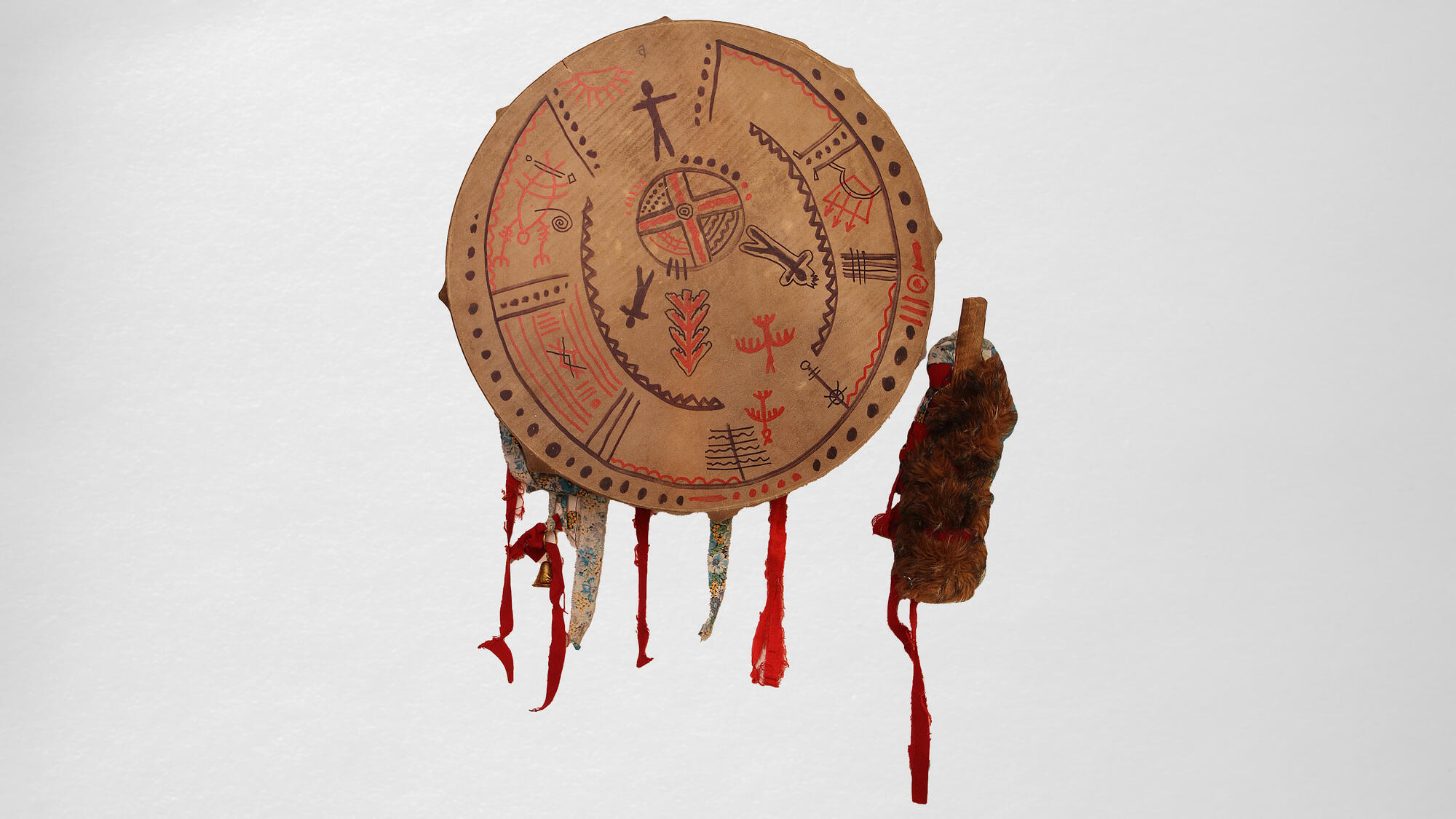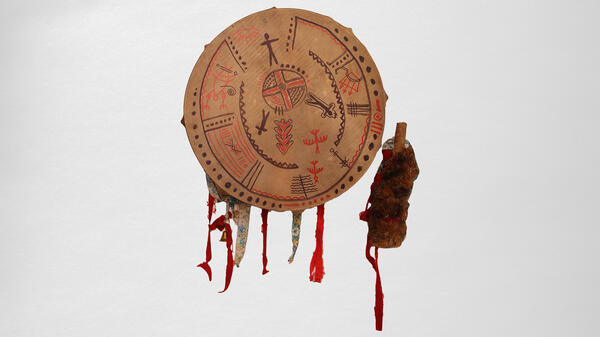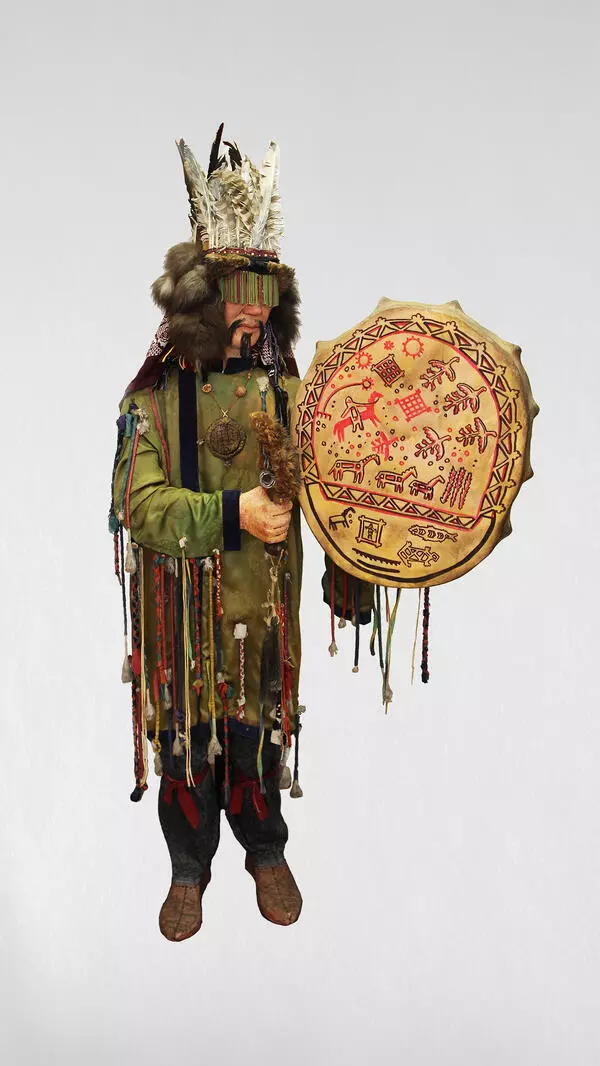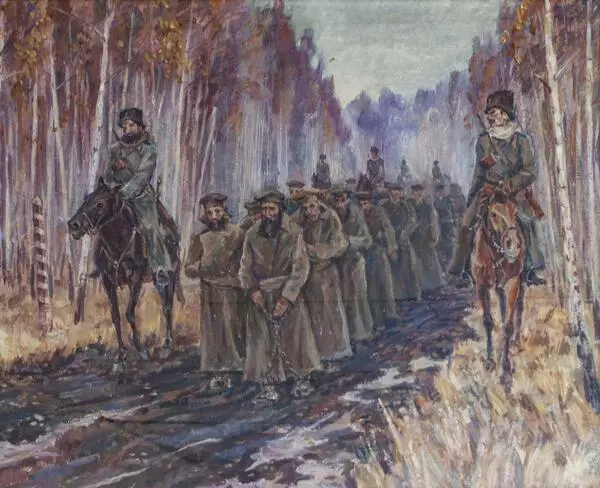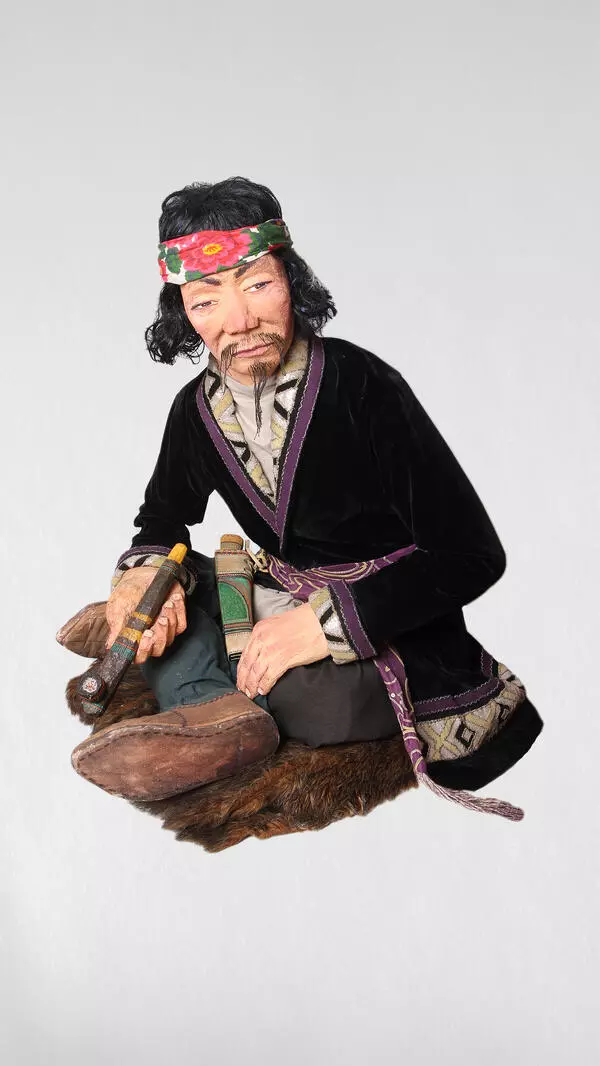The museum exhibits a tambourine made specifically for the exposition, dedicated to the Selkups — the indigenous people of Mariinsk. It was created by the People’s Master of Russia, a member of the Artists Trade Union of Russia Yuri Mikhailov in 1998.
Since ancient times, the Selkups have lived on the left bank of the Kiya River. Translation of the name of these people means ‘forest, taiga men.’ The Selkups belong to the Ural small race since their appearance contains both Mongoloid and Caucasian features. The Selkup family was headed by a man — he was engaged in fishing. The woman’s responsibilities included household work and child-rearing.
The Selkups believed in spirits and made sacrifices to obtain spirits’ support in all matters. That’s why shamans played a special role in the tribe. They were healers, fortune tellers, military leaders, and spiritual judges, who asked the spirits for the healing of the sick and a successful hunt.
The main attribute of shamanic ceremonies was a tambourine. It performed a lot of magical functions: it acted as the main “adviser” of the shaman and his guide to other worlds, and also set the rhythm of ritual dances and put the participants of the rituals into a trance.
The tambourine had complex symbolism. Its outer surface usually depicted the universe with celestial bodies, higher animals, sacred birches, light and winged spirits, as well as creatures from the Lower World. They could only be applied to the instrument by men as directed by the shaman.
Shaman tambourines were made at certain Moon’s phases, depending on the tasks the instrument was supposed to perform. Before starting work, the shaman did not eat animal food for three days. He skinned an elk, horse, or deer with his own hands, and with the help of a special rite, he sent the spirit of the animal to the heavenly palaces so that the tambourine would serve for a long time. The entire process of creating the instrument was believed to be accompanied by helping spirits.
After the shaman’s death, his tambourine was either fixed on a tree near the grave or, together with his other belongings, was hidden in a specially built small house — the “house of spirits.” But the shaman instrument was never passed on to another person. The Selkups believed that the shaman’s power did not die with him, but remained alive in his tambourine. They believed that if an uninitiated person touches this powerful instrument, it can cause him a mental breakdown or even kill him.
Since ancient times, the Selkups have lived on the left bank of the Kiya River. Translation of the name of these people means ‘forest, taiga men.’ The Selkups belong to the Ural small race since their appearance contains both Mongoloid and Caucasian features. The Selkup family was headed by a man — he was engaged in fishing. The woman’s responsibilities included household work and child-rearing.
The Selkups believed in spirits and made sacrifices to obtain spirits’ support in all matters. That’s why shamans played a special role in the tribe. They were healers, fortune tellers, military leaders, and spiritual judges, who asked the spirits for the healing of the sick and a successful hunt.
The main attribute of shamanic ceremonies was a tambourine. It performed a lot of magical functions: it acted as the main “adviser” of the shaman and his guide to other worlds, and also set the rhythm of ritual dances and put the participants of the rituals into a trance.
The tambourine had complex symbolism. Its outer surface usually depicted the universe with celestial bodies, higher animals, sacred birches, light and winged spirits, as well as creatures from the Lower World. They could only be applied to the instrument by men as directed by the shaman.
Shaman tambourines were made at certain Moon’s phases, depending on the tasks the instrument was supposed to perform. Before starting work, the shaman did not eat animal food for three days. He skinned an elk, horse, or deer with his own hands, and with the help of a special rite, he sent the spirit of the animal to the heavenly palaces so that the tambourine would serve for a long time. The entire process of creating the instrument was believed to be accompanied by helping spirits.
After the shaman’s death, his tambourine was either fixed on a tree near the grave or, together with his other belongings, was hidden in a specially built small house — the “house of spirits.” But the shaman instrument was never passed on to another person. The Selkups believed that the shaman’s power did not die with him, but remained alive in his tambourine. They believed that if an uninitiated person touches this powerful instrument, it can cause him a mental breakdown or even kill him.
